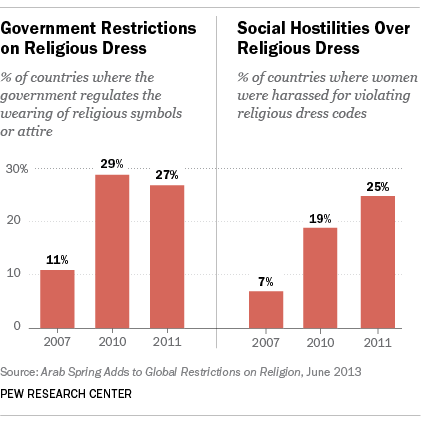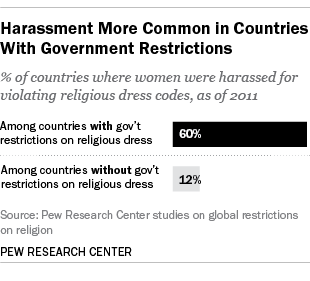
A Sudanese woman, Amira Osman Hamed, is expected to stand trial on Sept. 19 for refusing to wear a hijab, the scarf worn by many Muslim women to cover their hair. According to The Huffington Post, Hamed was charged with violating a Sudanese law that states, “Whoever does in a public place an indecent act or an act contrary to public morals or wears an obscene outfit or contrary to public morals or causing an annoyance to public feelings shall be punished with flogging which may not exceed forty lashes or with fine or with both.”
Sudan is one of an increasing number of countries whose governments regulate the wearing of religious symbols or attire, such as head coverings for women or facial hair for men. The Pew Research Center’s latest report on global restrictions on religion finds that, as of 2011, 53 of the 198 countries included in the study (27%) have such restrictions, up from 21 countries (11%) in 2007.

In addition to government regulations, private individuals and groups also try to enforce norms of religious attire in many countries. Our study finds that the number of countries in which women have been harassed by individuals or groups for violating religious dress codes has increased in recent years. In the latest year studied, such social hostilities over religious attire were found in 50 countries (25%), including Sudan. Five years earlier, such incidents were reported in 14 countries (7%).
While there may not be a direct causal connection between government regulations and social hostilities involving religious attire, our data show that harassment of women over religious dress occurs more often in countries where the wearing of religious symbols and attire are regulated by any level of government.